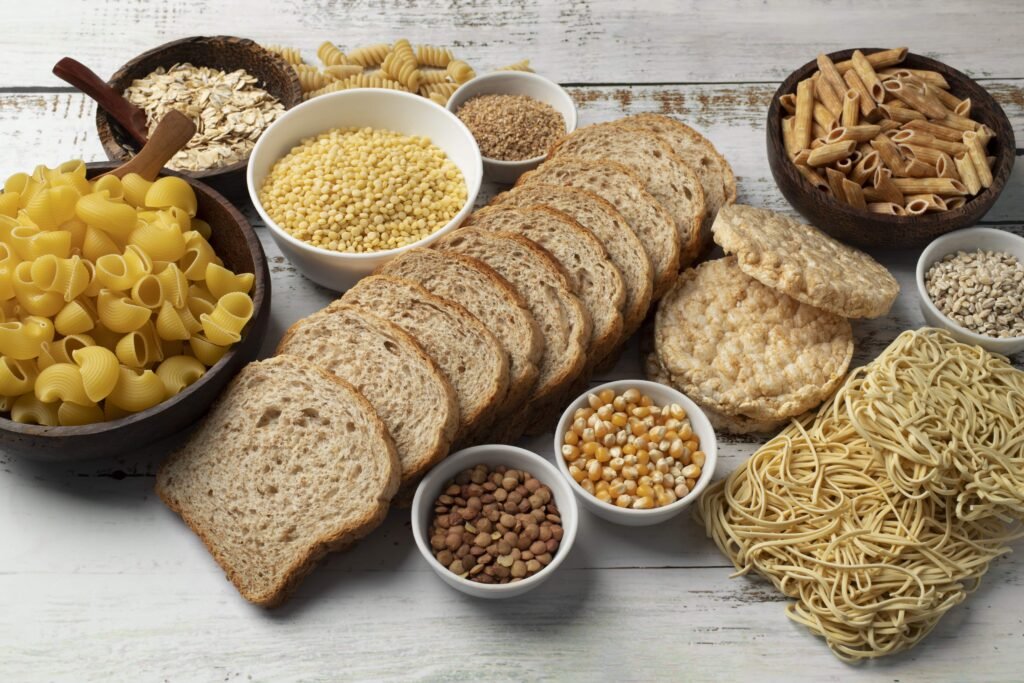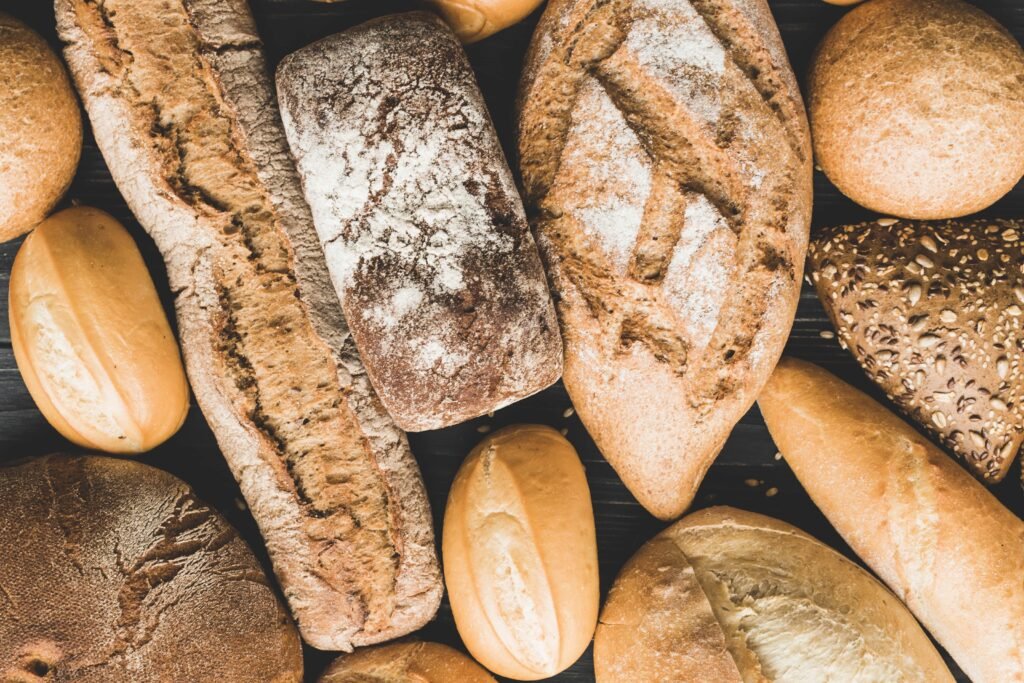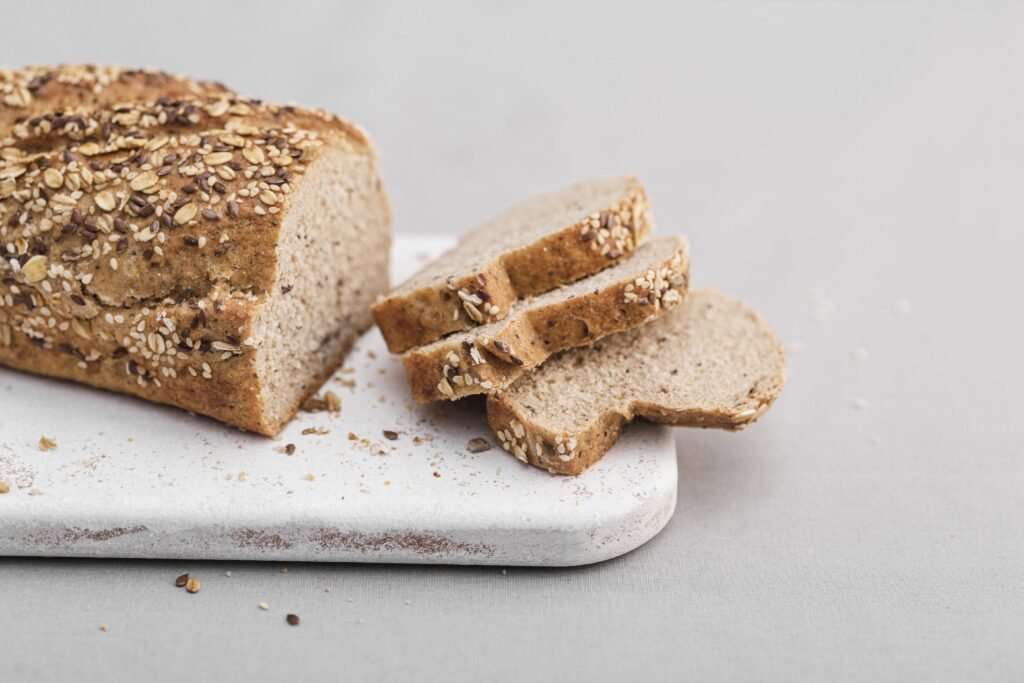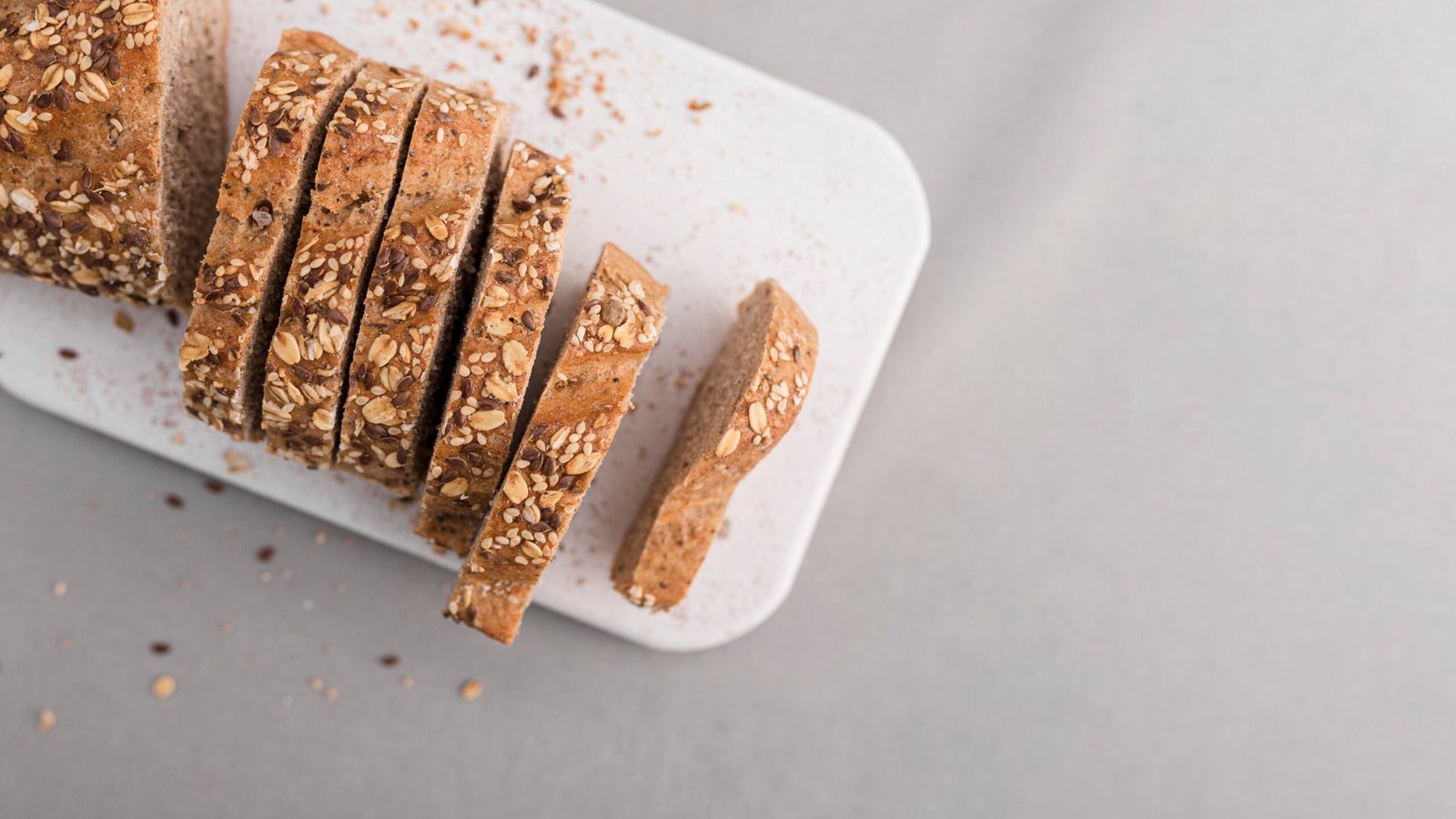I used to love that morning slice of toast, until I noticed it often left me feeling bloated and sluggish. The culprit, it turned out, was gluten – a protein in wheat, barley, and rye that gives bread its chewy texture. For people with celiac disease, gluten triggers an autoimmune attack on the small intestine. But even without celiac, many of us report gut issues after eating gluten.
It’s not just about celiac disease. Some people have non-celiac gluten sensitivity, meaning they get similar symptoms (bloating, diarrhea, stomach pain) from gluten even though it doesn’t damage the intestinal wall. In this post I’ll share what gluten is, why people avoid it, and how choosing the best gluten free bread can actually support your gut. I’ll also tell you about my own gluten-free bread journey, review the types of GF breads out there, and give tips (and even an easy recipe idea) for making or buying bread that’s gentle on the gut.
Table of Contents
What Is Gluten – and Why Do People Avoid It?

Gluten is a group of proteins found in wheat (all types), barley, rye and related grains. It gives dough its springiness and helps bread rise. In healthy folks, gluten is generally harmless. But some people can’t digest it.
- Celiac Disease: About 1–1.5% of people have celiac disease. In celiac, gluten triggers an immune reaction that damages the lining of the small intestine. This leads to symptoms like stomach pain, bloating, diarrhea, fatigue and nutrient deficiencies. For celiac patients, a strict gluten-free diet is essential to stop the inflammation and heal the gut lining.
- Non-Celiac Gluten Sensitivity (NCGS): Others have gluten sensitivity without celiac. They feel similar gut symptoms after eating gluten, but there’s no intestinal damage. Research is still evolving, but many NCGS sufferers report digestive relief on a GF diet. One reason: some people sensitive to wheat may actually be reacting to the fructans (a type of FODMAP) in wheat rather than the gluten protein itself.
- General Gut Wellness: Beyond these conditions, plenty of people choose GF eating for gut health. Many report less bloating and indigestion after cutting gluten. In fact, as one chiropractor-reviewed article notes, “gluten has an inflammatory effect on the digestive tract,” so removing it often calms that inflammation. This can mean feeling less sluggish, with reduced gas and tummy troubles.
In short, gluten triggers disease for some (celiac) and symptoms for others (sensitivity/IBS). And a gluten-free diet forces us to look closely at what we eat – often cutting out processed foods – which can benefit gut health in general. As one expert bluntly put it: “Many people think avoiding gluten is as simple as skipping bread and pasta… but gluten hides in many foods (soy sauce, beer, sauces). Reading labels is key”.
My Gluten Free Bread Journey
I wasn’t born avoiding gluten. I grew up on sandwiches, pizza and cinnamon rolls. But over the years I noticed a pattern: after a few slices of wheat toast or a sandwich, my stomach felt gassy and heavy. It wasn’t just indulgence – my gut truly rebelled. I felt better when I accidentally went gluten-free (for a day when I couldn’t find bread) and worse when I indulged. It was confusing.
Then a friend who had IBS mentioned she felt worlds better on gluten-free sourdough. So I gave it a try. I started with a GF multigrain loaf from the health food store (it was dense, but I tolerated it). Over time I experimented with GF bagels, tortilla wraps, even sourdough-fermented GF breads made from buckwheat and rice. Slowly, I noticed my bloating decreased, and I felt more energetic. It was like giving my gut a break.
Switching to gluten-free bread wasn’t easy at first. Now I enjoy making a simple GF sandwich loaf at home or toasting GF slices with avocado. The warm, comforting ritual of bread survived – without the bellyache. In this guide, I’ll share what I learned along the way, to help you make smart bread choices that keep both your tastebuds and your gut happy.
Types of Gluten-Free Bread and How They’re Made

Traditional wheat bread is usually just flour, yeast, water, salt – and the gluten protein does all the magic of binding and elasticity. Gluten-free breads, by contrast, use a variety of non-wheat flours and binding agents. Here are the main types:
- Sandwich Loaves (Yeast-Risen): These are your classic white or wholegrain-style loaves made in a pan. They often use a gluten-free flour blend (rice flour, potato starch, tapioca starch, sorghum flour, etc.) as the base. Because none of these flours contain gluten “glue,” bakers must add binders.
- Seed and Multigrain Breads: Many GF loaves are packed with seeds (flax, chia, sunflower, pumpkin) and ancient grains (sorghum, millet, quinoa, buckwheat) for extra fiber and nutrition. These breads tend to be dense and hearty. Some use sprouted grains (like sprouted buckwheat) so the seeds bind themselves without added gums. For example, a sprouted buckwheat bread relies on the buckwheat’s natural “stickiness,” needing only water and salt. That makes it very gut-friendly, since it avoids artificial binders altogether.
- Sourdough-Style GF Bread: Traditional sourdough uses wheat flour fermented by wild yeasts, which partly break down gluten. Gluten-free sourdough replaces the wheat with GF grains (e.g. buckwheat, brown rice) and allows natural fermentation. The process gives a tangy flavor and can slightly improve digestibility. (Note: A true sourdough starter on gluten-free flours will have different microbes, but the principle is the same.) Sourdough breads made from white wheat flour are low in FODMAP fructans, but they still have gluten, so celiacs must avoid them.
- Quick Breads (Flatbreads, Banana Bread, etc.): Not all GF breads are yeasted loaves. Many people make flatbreads or pitas using GF flour and oil, baking or pan-frying them. GF banana bread or zucchini bread (which we eat as “bread”) use baking soda instead of yeast and often almond or coconut flour. These are easy to whip up but are more like cake. They still count as “gluten-free bread” but they serve more as treats or breakfast breads.
Each type of GF bread has its own texture. Yeast-risen loaves are lightest (thanks to starch and binder tricks), while seeded and sourdough varieties are heavier but usually more flavorful. The key in all cases is that gluten-free bakers substitute textures and nutrition through different ingredients: fiber-rich flours (like sorghum, teff, or amaranth), seeds, and fermenting techniques.
Gut-Friendly Ingredients to Look For (and Avoid)
Not all gluten-free bread is created equal. For gut health, look for ingredients that support good digestion, and steer clear of those that might irritate your belly:
- High-Fiber Flours and Additions: Whole, fiber-rich grains feed your gut microbiome and help regularity. Great choices include teff, buckwheat, millet, sorghum, amaranth, and brown rice flours. For example, buckwheat (which is actually a seed, not related to wheat) is rich in fiber and antioxidants like rutin and quercetin that may help reduce inflammation. Teff and brown rice add extra fiber and nutrients (teff is high in protein and fiberhealthline.com; brown rice has 3g fiber per cup and is linked to a lower risk of diabetes and weight gainhealthline.com). Some GF breads mix in legume flours like chickpea or lentil; these boost fiber and protein too. In fact, a recent study noted that breads made with chickpea or amaranth flours have naturally high fiber, rivaling traditional whole wheat.
- Seeds and Nuts: Flaxseeds, chia seeds, sesame, and nuts not only add fiber and healthy fats (omegas), but they also aid digestion. They give good crunch and keep you full. Some GF breads even include psyllium husk or chia gel, which absorb water and create a loose “gel” that holds the loaf together and soothes the gut. (Psyllium husk in particular is a terrific binder in GF baking and adds soluble fiber.)
- Minimal Additives: Read the ingredient list like a detective. Avoid overly long lists of unpronounceable additives. Common additives in cheap GF breads include xanthan gum or guar gum (binders), methylcellulose (fiber), inulin/chicory root, and excess oil or sugar to improve mouthfeel. These can all irritate sensitive guts. Added sugars (corn syrup, honey) and malt can disrupt your microbiome. Instead, look for “clean” labels: basic ingredients like whole grains, water, yeast, olive oil, salt, maybe seeds and a single binder like psyllium.
- Healthy Fats: Check the oils. Olive oil or small amounts of avocado oil are wholesome. Many GF breads use sunflower oil or flax oil – also fine. But be wary of palm oil, coconut oil, margarine or partially hydrogenated oils (some GF breads do use coconut or palm). These saturated fats can contribute to inflammation.
- Fermented or Sprouted Options: Fermentation (like sourdough) and sprouting break down complex carbs and can make bread easier to digest. Some GF breads (and crackers) are made from fermented rice or buckwheat, which is great for the gut. Sprouted grain breads (even GF ones) start with soaked grain that’s germinated – this increases nutrients and can be gentler on digestion.
In short, a gut-friendly gluten-free bread is one that emphasizes whole ingredients and fiber, and skips the extra junk. Think: whole grains + seeds + a little healthy oil + salt + yeast/water. The fewer mystery fillers, the better.
Health Benefits for Digestion and Inflammation
Switching to gluten-free bread brought me less bloating, but why? There are a few reasons gluten-free bread can help the gut:
- Reduced Inflammation: Gluten is inherently inflammatory for some people. Removing it often dials down gut inflammation. Studies suggest that even in non-celiac individuals, wheat proteins and related compounds (like amylase-trypsin inhibitors) can irritate the gut lining. Practically speaking, many people experience noticeable relief. As one practitioner notes, “The gluten molecule has an inflammatory effect on the digestive tract…even in those without a gluten allergy. By removing gluten, your gut inflammation subsides, bloating reduces, and digestion improves.”. Fewer inflammations can also reduce other symptoms like occasional stomach cramps or IBS flares.
- Gentler on IBS: If you have IBS, gluten-free bread can be easier to digest, especially if it’s low in FODMAPs. Many IBS patients who try a gluten-free diet report improved symptoms. (There’s debate over whether this is due to gluten itself or because they’re eating less wheat fructans. Either way, gut comfort improves.)
- Fiber and Prebiotics: A worry with GF diets is missing out on fiber. But the right GF bread can actually boost fiber intake. Whole-grain GF breads (with brown rice flour, buckwheat, psyllium husk, etc.) often have more fiber per slice than white bread. Fiber feeds the good bacteria in your colon, improving regularity and gut health. . Beans, seeds, and pseudo cereals in GF breads act like prebiotics. Over time, this can improve gut microbiome balance (and digestion) much like a high-fiber diet would.
- Nutrient Replenishment (in Celiac): For those with celiac, the benefits are dramatic: as the gut heals, nutrient absorption improves. Chronic gluten damage often leads to deficiencies (iron, B12, D, etc.). Eating GF bread made from nutrient-rich flours (like sorghum, millet, quinoa, buckwheat) and plenty of fruits/veggies helps restore those levels and overall energy.
To sum up, a carefully chosen gluten-free bread can directly ease digestion (less gas, bloating, cramping) and indirectly reduce chronic inflammation in the gut. Many readers have shared that after going GF, their bellies feel flatter and their digestive rhythm steadier. Some even notice clearer skin and fewer joint aches – benefits of an anti-inflammatory diet. Everyone’s body is different, but if your gut is complaining, switching to a gut-friendly GF loaf is worth trying.
Simple Gluten-Free Bread Recipe and Baking Tips

If you enjoy baking, making your own gluten-free bread at home can be satisfying (and you control every ingredient). Here’s a very basic outline of a yeast-risen GF loaf, along with some tips. Remember, GF dough is often more like a thick batter than traditional dough.
Basic Gluten-Free Loaf (Oven-Baked):
- Ingredients: About 3 cups GF all-purpose flour blend (with xanthan gum, or add 1 tsp), 1 packet instant yeast (2¼ tsp), 1 tsp sugar or honey, 1 tsp salt, 2½ cups warm water (100–110°F), 2–3 tbsp olive oil (or other oil), 1 tsp apple cider vinegar (helps with rise), 2–3 eggs (or 6 egg whites) or flax eggs (mix 2 tbsp flaxseed meal + 6 tbsp water). You can also add a handful of seeds or nuts.
- Steps: Mix the dry ingredients (flour, yeast, salt) in a bowl. In a separate bowl, whisk the warm water, oil, vinegar, and eggs. Pour the wet into the dry and beat (an electric mixer helps) until smooth. The batter will be pourable or like thick cake battermamaknowsglutenfree.com. Grease a 9×5-inch loaf pan (a smaller Pullman pan makes a taller loafmamaknowsglutenfree.com). Pour the dough into the pan and let it rise in a warm place until nearly doubled (about 45–60 min). Bake in a preheated 350°F (175°C) oven for about 30–40 minutes, or until golden and the loaf sounds hollow when tapped. Cool fully before slicing (GF bread needs that time to finish cooking inside).
Tips for Success:
- Use a good flour blend: Gluten-free flours are not interchangeable like wheat flour. Many home bakers recommend a blend that has brown rice flour, tapioca starch, and potato starch. (The recipe above uses such a mix.) Also ensure you have a binder like xanthan gum or add psyllium husk to help the dough hold together.
- Psyllium Husk: As one baker notes, adding psyllium husk powder can vastly improve GF bread. It makes the dough more elastic and keeps it from falling apart. Many bakers use about 1–2 tablespoons per loaf. Psyllium allows the dough to rest without losing structure, giving a light, cohesive crumb.
- Room Temperature Ingredients: Make sure your eggs (or liquid) are not cold. Yeast loves a warm environment. Some people even proof the dough in a slightly warmed oven (set to ~100°F) to help it rise.
- No Over-Kneading: Unlike wheat dough, gluten-free dough should not be kneaded to develop gluten (there is none to develop). In fact, one GF baker advises: “Don’t follow the directions for wheat bread. Any kneading beyond mixing (and any punching down) will punch the life out of a GF loaf.”. So mix until smooth, and then let it rise.
- Shape Before Rising: After mixing, shape (or put in pan) before the rise. GF dough usually only rises once, in the pan. So form it into the final shape immediately (loaf pan, rolls, etc) before the first rise.
- Longer Bake, Lower Temp: GF loaves often need a slightly lower oven temperature (to cook all the way through) and a bit more time. You can tent the top with foil if it browns too fast. A common approach is bake at 325–350°F for 35–45 minutes.
- Create Steam (Optional): Some bakers spritz water in the oven or put a pan of water below the rack to add steam, which can keep crust softer (though GF crusts are usually thin anyway).
- Flavor Variations: You can swap part of the flour mix for almond or coconut flour (gluten-free and low-carb), add herbs, or swirl in cinnamon/sugar for a sweet loaf. Just remember that non-grain flours (almond, coconut) absorb moisture differently, so you might need more water or eggs.
Easy Recipe Example: One popular recipe uses Pillsbury GF flour (or any similar GF blend), 1 tsp xanthan gum, 1 packet yeast, 1/4 cup olive oil, 1/4 cup honey, 1 tsp apple cider vinegar, 1½ cups warm water, 3 egg whites, and a tsp of salt. The method above is essentially the same one she uses in her stand mixer: mix dry, add oil+liquid, then eggs. Her tips emphasize warm water/oven proofing, a small Pullman pan for height, and the “spoon & level” method for flour scooping.
Above all, follow a tested GF bread recipe and be patient. It may take a few tries to perfect the dough consistency. Baking GF bread at home is a great way to ensure there are no extra additives. And when it’s done, the aroma of fresh gluten-free bread can be just as comforting as its wheat counterpart.
Conclusion: A Happier Gut Starts with Better Bread
If bread often makes your stomach feel uncomfortable, switching to gluten-free bread might help. For some people, gluten causes big problems like celiac disease. For others, it just leads to bloating, gas, or stomach pain. The good news is that there are now many tasty and healthy gluten-free breads made from grains like rice, buckwheat, and sorghum that are gentle on the gut.
When choosing gluten-free bread, look for one with whole grains, seeds, fiber, and simple ingredients. Avoid ones full of sugar, gums, or unhealthy oils. You can also try making your own bread with gut-friendly flours. Over time, eating better bread can lead to less belly trouble, better digestion, and even more energy.
